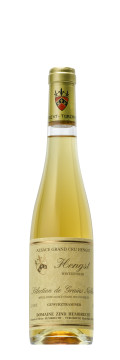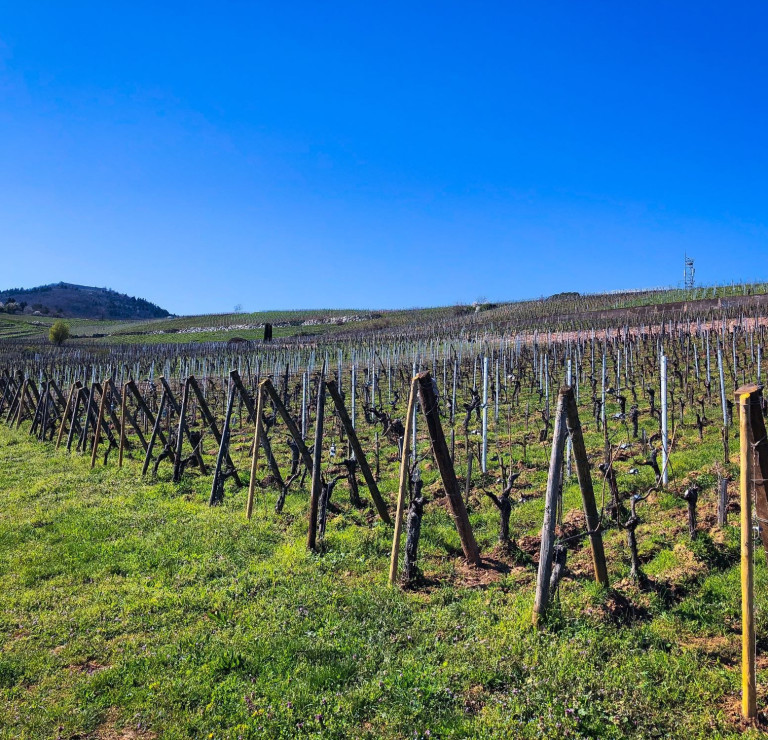
Technical presentation
| Bottling : | September 2009 |
|---|---|
| Acquired alcohol : | 12° |
| Residual sugar : | 166.0 g/l |
| Total acidity : | 4.7 g/l H2SO4 (7.2 g/l Tartrique) |
| pH : | 3.8 |
| Yield : | 17 hl/ha |
| Optimum tasting : | 2014-2038+ |
| Average age of vines : | 57 years |
| Terroir : | Grand Cru Hengst |
| Sweetness index : | 4 |
| Soil : | Calcareous Marl from the Oligocene period, South/South East facing, medium/steep slope |
Description of the wine Gewurztraminer Grand Cru Hengst 2008 - Sélection de Grains Nobles
Every year these old vines get a year older and every year we find more excuses not to add the vineyards planted in the 70s and 80s. They are located in the middle of the Grand Cru vineyard, facing south east and enjoying a very dry and warm microclimate. The character of the Hengst actually comes more from the exceptional marl calcareous soil than the climate. It allows the Gewurztraminer grape to ripen slowly, taking its time to fully mature the tough skins. Gewurztraminer is probably the grape variety that has the most problems to change colour and ripen these aggressive skin tannins. We made our first SGN in this vineyard in 2007 and thought that it would never happen again before long. However, the noble rot developed beautifully in this vineyard again in 2008 and because we had enough time and good weather forecast ahead of us, we decided to produce again an SGN Hengst in 2008. This wine is then made from the healthy clusters. Fermentation was slightly faster which suits more the wilder character of Hengst.

Tasting notes
02/2010 : Hengst is never our most flamboyant Gewurztraminer. On the opposite, it shows more leathery, spicy and mineral flavours that take a long time to open up. Just like the Clos Hauserer in Riesling, it benefits from some air contact to show all its potential. The palate is firmer, shows less the sweetness, but feels more powerful and big. Even the finish has more salty flavours.

The Hengst Grand Cru of Wintzenheim
The Hengst was first mentioned in the 9th century in an endowment of the Murbach Abbey. The lord of Haut Landsbourg as well as the bailiff of Kaysersberg shared the feudal rights up to the Great Revolution, whilst various noble families, abbeys and the bourgeoisie of Colmar exploited important parcels.